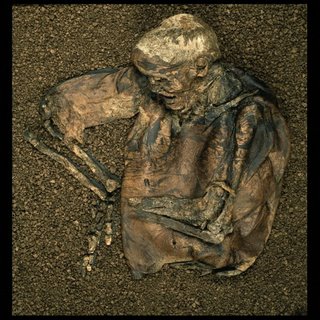Netflix Yes; LOVEFiLM nO
 Netflix really has been revolutionary. By making virtually any DVD available on demand to anyone in the entire USA, it has smashed the local brick & mortar video store irrevocably, and it has altered the way people watch TV and movies as much as TIVO and digital video recorders have changed viewers' relationship with the broadcast industry.
Netflix really has been revolutionary. By making virtually any DVD available on demand to anyone in the entire USA, it has smashed the local brick & mortar video store irrevocably, and it has altered the way people watch TV and movies as much as TIVO and digital video recorders have changed viewers' relationship with the broadcast industry.In the U.K. the most popular DVD-by-mail service is a company called LOVEFiLM.
LOVEFiLM is not Netflix.
The main thing that makes Netflix great is its genuine "on-demand" aspect. If I want to watch "Down By Law" (1986), "Gladiator" (2000), the entire series of "Freaks and Geeks" (1999), and "Andrei Rublev" (1969) - in that order - I will be sent "Down By Law", "Gladiator", the entire series of "Freaks and Geeks", and "Andrei Rublev" - in that order. Rarely, and usually only in the case of extremely popular titles just after release, Netflix will be unable to provide a requested title. This is usually accompanied by ample warning from the company, and a reliable promise that the title will be sent as soon as it is available.
The other key to Netflix's success - and it is a thing of beauty - is the Rental Queue. The Netflix Rental Queue allows you to fine-tune the order in which you want your movies to arrive. If you want to see Andrei Rublev first, and then "Down By Law", then split up the discs which comprise "Freaks and Geeks", maybe with 3 before "Gladiator" and 3 after, well, then no one's going to stop you. In fact, to us morbidly incurably cinemonks, the populating and ordering and massaging of the queue is an end in itself. It's a real pleasure to add movie after movie and then try to prioritize them, plan your viewing, create for yourself a 1st rate cinema education for the next year and a half. And of course there's the maxing out of the queue and having to decide which individual title you will have to remove from the list in order to add another title that you want to watch.
And Netflix also has a good engine that encourages you to rate movies and then gives you solid recommendations based on those ratings.
If I were to make another list, a "List Of Reasons To Return To The USA", Netflix access would go on it.
But, as I indicated, here in Britain, there is no Netflix. There is LOVEFiLM.
 LOVEFiLM is very much like Netflix - up to the bright red envelopes in which the DVD's are mailed and the white-on-red, black-bordered logo.
LOVEFiLM is very much like Netflix - up to the bright red envelopes in which the DVD's are mailed and the white-on-red, black-bordered logo.In the same way that minority ethnic groups can make jokes about themselves that no one else can, I being officially - and actually - British have to say that it's a sad and wretched thing to see, over and over, Britain taking on ideas introduced from the outside and with the enthusiasm of an over-praised child, apply those ideas slap-dash to its own local situation while missing the core of what made the idea good in the first place.
Exhibit A: Mexican Food. What is Mexican food? Well, it's - generally speaking - simple, meat and vegetables with spices often wrapped in a flour or corn tortilla, etc. I have eaten British-made Mexican food - I kid you not - which has been tuna and peas with chili powder wrapped in a pita. With cheddar cheese sauce.
Exhibit B: Sweet Potatoes. At University of Kent, a Thanksgiving dinner was arranged for the American students. Sweet, no? No. Traditionally, sweet potatoes are served at Thanksgiving. The American students were served sweet ... potatoes. Yes, mashed potatoes ... sweetened with sugar. There was weeping.
Exhibit C: British rap music and hip-hop. All I have to say is that if you don't have genuine actual gangsters actually shooting each other with military-issue automatic weapons on a daily basis in your city streets, please, please, please avoid attempting rap music of any kind. It's embarrassing for all of us.
And so, LOVEFiLM:
LOVEFiLM bills itself as "Europe's NO. 1 Online DVD Rental Service", but it offers relatively few continental titles, so I don't know how seriously to take that assertion.
First off, LOVEFiLM is not a good name. I know some marketing person somewhere really worked hard on it and I appreciate that. But just step back and listen to the word: "Luvfilm". The fricative "V" and "F" disappear into each other - and they are not helped by that disintegrating "ILM" sound at the end. "Lovfilm" sounds like the last thing a drunk might say before passing out cold on top of his girlfriend. Could we just have one hard consonant, please? Or an "S"? "LOVESFiLM" maybe?
And with the name "LOVEFiLM" you've already alienated half of your user base. Because no self-respecting macho-man-with-an-inferiority-complex is going to want to say to his colleagues on a Monday morning: "Hey guys, I joined LOVE-FiLM!" He would be shunned. Even I, who get weepy when Judy Garland sings "Somewhere Over The Rainbow", am loathe to say "LOVEFiLM" in mixed company.
But that's nitpicking. LOVEFiLM has a similar engine as Netflix for rating movies, and then getting recommendations back. But it's vague. And the accuracy of the recommendations doesn't seem to improve much after a certain amount of rating. Whereas it is a pleasure to rate movies on Netflix and watch your recommendations gaining more and more focus, it's depressing to rate film after film on LOVEFiLM and get back repeatedly "If you loved 'The Seventh Seal', you'll love 'Robin Hood: Prince Of Thieves'".
The LOVEFiLM rental queue - called, ironically, a "list" by LOVEFiLM, not a "queue" - is really not much of a queue at all. Whereas Netflix allows you to fine-tune your queued movies via an interface that allows you to assign an ordinal number to each, LOVEFiLM offers you the opportunity to put movies in one of three categories: "HIGH", "MED", "LOW" priorities. And that's it.
The obvious - and typically British - problem this introduces is that it entirely removes the "on demand" aspect that makes DVD-by-mail appealing. The very point of having a rental queue is to be able to watch the movies I want to see exactly when I want to see them.
If I want to see "Down By Law", "Gladiator", the entire series of "Freaks and Geeks", and "Andrei Rublev" - in that order (well, I'm not going to be able to get "Freaks and Geeks" because that is a particularly American tv series that executives somewhere have decided will not translate to the other side of the Atlantic and they are very wrong about that but you may insert your own imagined tv series) - the only way I'm going to have any chance of watching them in the order will be to put the one I want to see next in my HIGH priority list and put all the rest on the MED or LOW priority list. Because if they all go into the HIGH priority bin, they will be sent to me in an unpredictable order selected by some oily fingered worker at the LOVEFiLM distribution plant.
And that, if I'm lucky.
In a recent LOVEFiLM experience, my household received not a single one of the films in our HIGH priority list. We were told, after sending an email query, that none of the half dozen films tagged HIGH were available at present. And so, we were sent randomly selected titles from our very long MED priority list - one of these titles was a dull reality tv show about families building their new houses. That MED priority section can be a real quagmire of impulse clicks. We did watch the show. But our weekend was ruined. A queue that allowed you to put a title like that at the bottom of a long list would easily prevent such tragedies.
There is too the LOW priority section. But, let's face it, the idea that you would select a bunch of movies so that you could put them in a list marked "Low Priority" - well, it's kind of idiotic.
In LOVEFiLM's defense, they do have a system to warn users that there might be a wait for a film. A gray, half-full hour-glass icon indicates: "It is likely there will be a short wait for this title." A red, full hour-glass icon indicates: "It is likely there will be a long wait for this title." However, I have yet to see the icon next to any of the HIGH priority movies we have requested that we have been refused.
The impression one gets, as a user of the service, is that LOVEFiLM wants to make it as easy on themselves as possible, but still get you to give them money. Apparently, it's working because we continue to give them money.
I want to make clear that LOVEFiLM is not lousy. The service is perfectly adequate. But given the technology, expertise, and creative fire so readily available in this wide wired world of the 21st century, "adequate" is now synonymous with "insulting".
If you want to become a multi-millionaire in Britain, you can - as I've said before - open a good, authentic Mexican restaurant. Or you can offer us the DVD-by-mail service that we deserve.

 The Animal Reception Centre is the principle entry point for all live animals entering the United Kingdom by air. The Centre's mandate is to enforce the statutory requirements of UK and EU legislation with regard to importation of animals via air transport. This legislation incorporates Rabies Control – hence the Centre's previous designation as the Animal Quarantine Station - and the welfare of animals during transport.
The Animal Reception Centre is the principle entry point for all live animals entering the United Kingdom by air. The Centre's mandate is to enforce the statutory requirements of UK and EU legislation with regard to importation of animals via air transport. This legislation incorporates Rabies Control – hence the Centre's previous designation as the Animal Quarantine Station - and the welfare of animals during transport.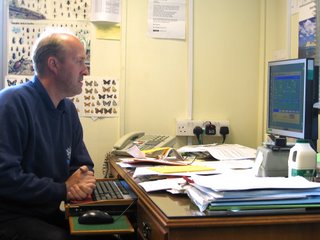 Despite the exhaustive checking, a shipment rarely spends more than four hours – more often closer to two - at the Centre before it is on a lorry and off to its destination.
Despite the exhaustive checking, a shipment rarely spends more than four hours – more often closer to two - at the Centre before it is on a lorry and off to its destination.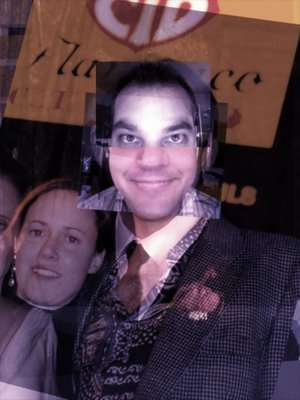
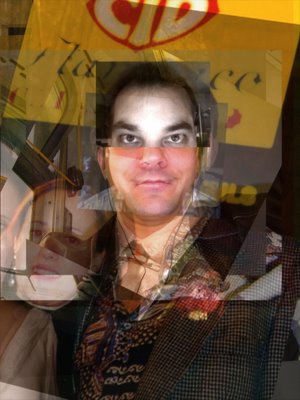
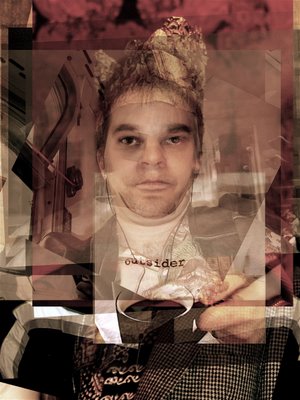
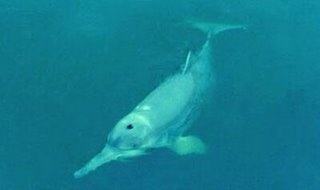 I got punched in the head this morning.
I got punched in the head this morning.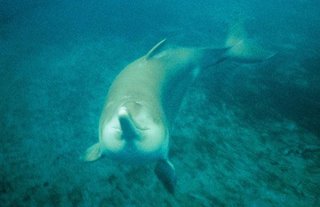 The baiji, long been recognised as one of the rarest and most critically threatened mammal species, now has the dubious honour of being the first cetacean species driven to extinction by human activity.
The baiji, long been recognised as one of the rarest and most critically threatened mammal species, now has the dubious honour of being the first cetacean species driven to extinction by human activity.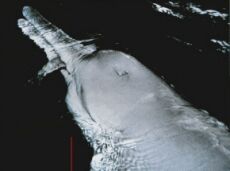 The baiji is not the only species endemic to the Yangtze River that has gone extinct or is in very grave danger of doing so.
The baiji is not the only species endemic to the Yangtze River that has gone extinct or is in very grave danger of doing so.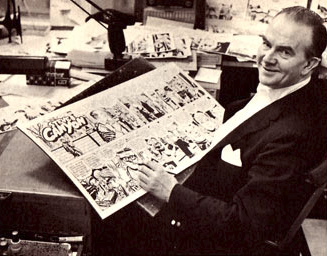
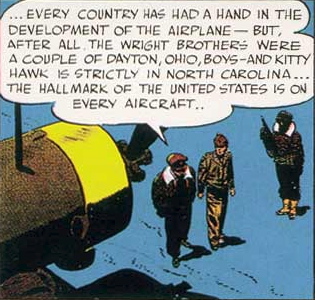
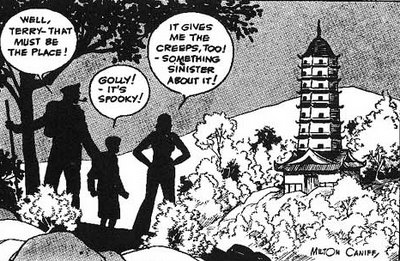 When "Steve Canyon" began in 1947 – the same year the US Air Force was founded - I started to save all of its strips. I discovered that the best Sunday strip was on the front comic page of the New York Mirror. I don’t why, but the color was more intense than any other I knew about, and seemingly was a crisper print.
When "Steve Canyon" began in 1947 – the same year the US Air Force was founded - I started to save all of its strips. I discovered that the best Sunday strip was on the front comic page of the New York Mirror. I don’t why, but the color was more intense than any other I knew about, and seemingly was a crisper print.
